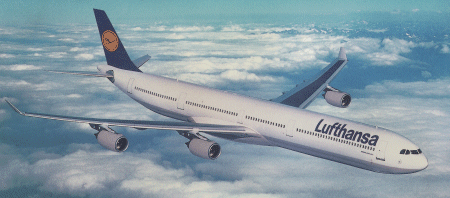Andrew Doyle/MUNICH David Learmount/LONDON
Airbus Industrie is trying to persuade European and US regulatory authorities to modify certification rules to allow it to build the A340-600 with the same number of emergency exits as the smaller -300, despite the fact that the new variant seats nearly 100 more passengers.

To comply with Joint Aviation Authorities and US Federal Aviation Administration certification rules, Airbus has incorporated a pair of over-wing Type III (hatch type) exits in the A340-600 prototype design in addition to the four pairs of Type A (full-size) doors on the -300. It says it could improve safety standards by not incorporating the hatches.
The A340-600 will be the world's longest airliner, exceeding the 777-300 - which has 10 passenger doors - by about 1m, although the Airbus has lower maximum seating capacity.
Airbus A330/A340 programme director Helmut Schrecker says the consortium is aware that "-we have to show that there will actually be an improvement in safety".
Not fitting the extra doors would save 500kg in weight, says Schrecker, would free space for up to eight more seats and cut manufacturing costs by allowing a standardised centre fuselage design for the A340-500/600 family.
But without the extra exits, the A340-600 violates a certification requirement that the distance between adjacent exits should not exceed 60ft (18m). The rule was introduced to prevent airlines blocking over-wing exits on Boeing 747 Classics. British Airways and KLM still operate this configuration because the requirement was not made retrospective in Europe, unlike the USA.
Airbus' argument cites cabin evacuation passenger behavioural research by the UK's Greenwich and Cranfield universities in conjunction with the UK Civil Aviation Authority and the FAA.
Research suggests that many traditional beliefs about how people behave during accident evacuation are not true. One belief is that people tend to go for forward exits or for the one by which they entered. In reality, says Greenwich's Professor Ed Galea in a recent paper published in the Aerospace Journal, they tend to go for the exit nearest to them, regardless of its size.
So an aircraft's centre doors, with passengers converging on them from fore and aft, become the busiest, overloading them, especially if they are Type III hatches. Tests at Cranfield a decade ago proved that Type III exits can become jammed with bodies.
Airbus has stepped up its efforts to have the rules changed but faces a tough fight to get a decision from the 29-country JAA in time for its internal cut-off date of late April, after which it will be too late to incorporate the changes into early production aircraft.
JAA large aircraft certification co-ordinator Adrie Kraan says: "At the moment, there are discussions going on with the JAA cabin safety specialists. We're putting all our efforts into these discussions with Airbus, and of course Airbus has its schedules and we're doing our best to work to those.
"There is some profit for Airbus and it is up to us to make sure our safety goals are met," he says.
Source: Flight International























